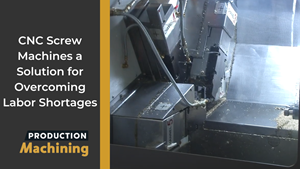Training the Next Generation: Thinking About New Employee Outreach from the Shop’s Perspective
We are all faced with a challenge regarding today’s new workforce. We all need to think outside the box about our company culture, training systems, operational strategies and relationships with high schools and vocational institutions. Here are some other things to think about that we have found to be helpful.
We are all definitely faced with a challenge regarding today’s new workforce. One thing is for sure, the same old practices, operations, expectations and training systems just won’t cut it when it comes to attracting, developing and retaining younger talent for our shops.
We all need to think outside the box about our company culture, training systems, operational strategies and relationships with high schools and vocational institutions. I know there is a ton of work being done by the membership and that is a great start. Here are some other things to think about that we have found to be helpful.
Self-Directed Work Teams and Flexible Operations
The new generation of worker now expects to have a work-life balance and expects an employer to offer that. Traditional fixed start and end times with little flexibility or openness to outside factors usually results in poor attendance, loss of focus and unwillingness to stick it out. Micromanaging is the quickest way to get younger folks to flee your shop. These systems take work, but are well worth the investment as it definitely leads to a more empowered employer with work/life flexibility.
Streamlined Training Processes
Many shops expect candidates to have all the skills and knowledge to come in on day one and get started, but it is just not realistic. Our industry is moving at a pace much faster than any educational institution can deal with. Creating a streamlined and effective training structure that rewards performance frequently (two to three months) at a time is the best way to keep them engaged. If it drags on for extended periods of time with no performance feedback or upward mobility, they will quickly lose interest. Defined levels of training spread out over nine to 12 months keeps them rewarded and engaged and gives them a sense of accomplishment. Training should include not only on-the-job technical skills, but business involvement sessions. We find that when new employees feel engaged in the entire business, they tend to feel more invested. In addition, training never ends, and when it does, so does the employee’s interest. This is definitely a challenge.
Employee Engagement
We can’t stress this enough. If you are not communicating, engaging and challenging your employees, especially the younger ones, on a daily or even weekly basis, they tend to feel they are only a number. Shops that engage, develop and challenge create an X-factor that is hard to measure. The employees feel part of something and this innate feeling tends to keep them around a little longer or prevents them from jumping for a little extra money because the other company does not offer that.
Vocational Schools and High Schools
Many of us can’t create a full-time feeder system hiring new full-time employees all the time. What we can do is create a part-time or apprentice relationship with these institutions. Kids that look for part-time jobs while attending high school or kids looking for 20 to 30 hours per week while attending a local college or technical school. We carry up to 10 to 16 of these positions year-round just to introduce kids to our industry and the work. We have little or no expectation that after graduation they may want to work here full-time, but there are cases where this happens, and it gives us one to two years to develop and watch their potential before we invest.
Reach out to these institutions if you can and try developing a relationship. It provides marketing for your company, and if your structure allows for part-time employment, it gets younger folks in your door and exposes them to our industry. You can learn a lot from them, what they look for, what they want and how they work.
We employ all of these strategies and still see significant challenges as most shops do. Those who are not progressive and thinking outside the box will likely face more challenges. Our new hire retention was in the 80 to 90 percent range 10 years ago. Over the last five years, it is down to 60 to 70 percent. Our historic turnover percentage was around 6.5 percent, but it is now up in the 10 to 15 percent range.
Related Content
Strengthening Manufacturing Workplaces Through Active Listening
A good strategy to weather the storms of manufacturing market upheavals and unpredictable factors is to commit to continuous, active employee listening.
Read MoreJob Candidate Questions and What They Tell Us
Individuals who ask thoughtful, original questions in the interview set themselves apart.
Read MoreVideo Tech Brief: CNC Screw Machines a Solution for Overcoming Labor Shortages
CNC screw machines can exceed job shop productivity and enable manufacturers to overcome perpetual employment gaps.
Read More2023 Emerging Leaders Strengthen Their Staffs, Solve Problems
Superb critical thinking, top-notch leadership skills and a passion for building a strong team are a few of the common traits held by this year’s five Production Machining Emerging Leader award winners.
Read MoreRead Next
Do You Have Single Points of Failure?
Plans need to be in place before a catastrophic event occurs.
Read MoreA Tooling Workshop Worth a Visit
Marubeni Citizen-Cincom’s tooling and accessory workshop offers a chance to learn more about ancillary devices that can boost machining efficiency and capability.
Read More5 Aspects of PMTS I Appreciate
The three-day edition of the 2025 Precision Machining Technology Show kicks off at the start of April. I’ll be there, and here are some reasons why.
Read More





















